Welcome to our Colossus Movie Guide for Suzume. This guide contains everything you need to understand the film. Dive into our detailed library of content, covering key aspects of the movie. We encourage your comments to help us create the best possible guide. Thank you!
What is Suzume about?
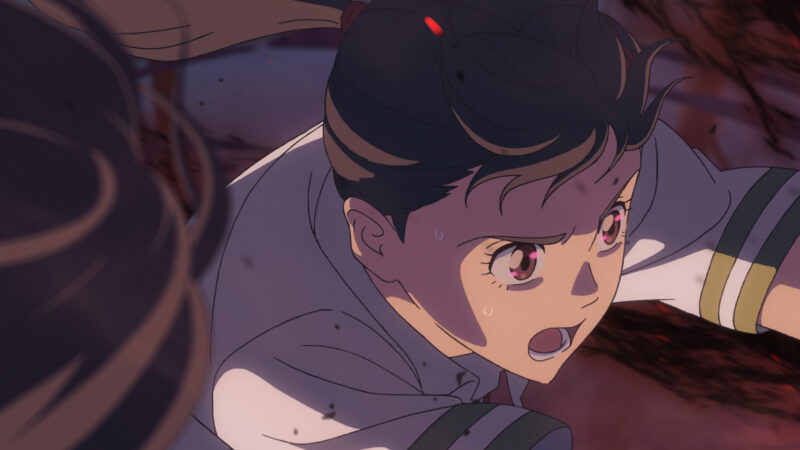
Suzume, aka Suzume no Tojimari, is a movie that explores the grieving process. But not just from an individual standpoint—from a national, societal, communal standpoint. Director Makoto Shinkai stated in an interview that the Great Earthquake of 2011 completely reshaped his worldview and helped him focus as an artist. The character of Suzume, a 17-year-old girl, could be seen as an extension of Shinkai, as Suzume deals with losing her mother years after that very earthquake. Her fight to protect Japan from oncoming natural disasters represents the mental processing of her own grief. As she moves between various areas that have been stricken by natural disaster, she connects with lost souls who died through the Ever-After, as well as the people who lost loved ones. By connecting more with her homeland and its people, she learns to become whole again and start her life anew.
Movie Guide table of contents
Cast
- Suzume Iwato – Nanoka Hara
- Souta/Sōta Munakata – Hokuto Matsumura
- Tamaki Iwato – Eri Fukatsu
- Minoru Okabe – Shota Sometani
- Rumi Ninomiya – Sairi Ito
- Chika Amabe – Kotone Hanase
- Tsubame Iwato – Kana Hanazawa
- Hitsujirō Munakata – Matsumoto Hakuō II
- Tomoya Serizawa – Ryūnosuke Kamiki
- Daijin – Ann Yamane
- Miki – Aimi
- Young Suzume – Akari Miura
- Makoto Shinkai – Writer and director
The ending of Suzume explained
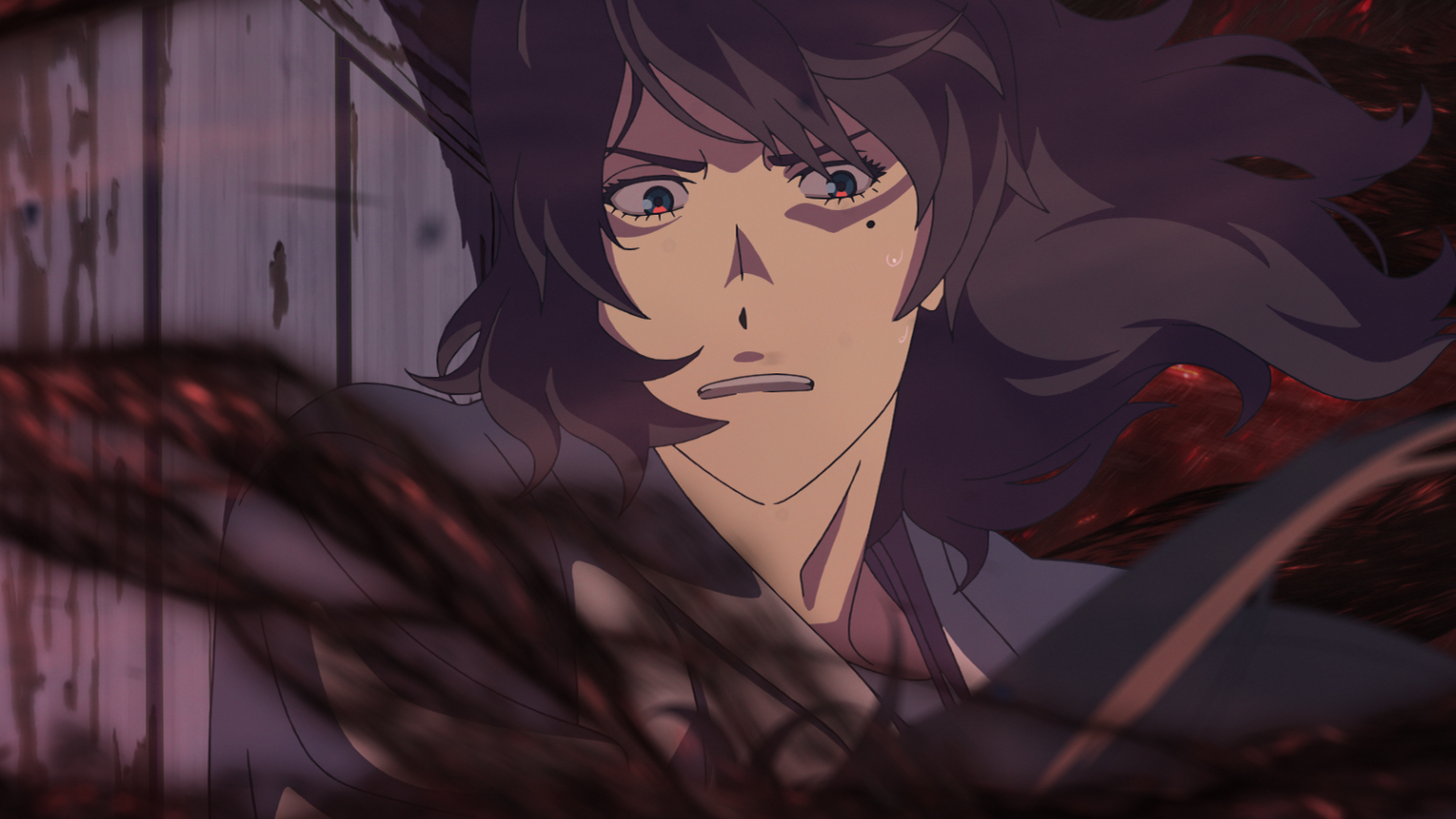
A recap of Suzume‘s ending
After Souta is turned into a keystone, Suzume visits Souta’s grandfather at the hospital. The grandfather explains that Suzume had unknowingly entered the realm of the Ever-After before, given her ability to see the worm and the Ever-After through the doors. Desperate to save Souta, despite the grandfather’s urging to go home and forget everything, Suzume forces the grandfather to reluctantly reveal that the doorway she entered as a child is the only path for reentering the Ever-After and saving Souta.
Suzume then piles into a car with her aunt Tamaki and Souta’s friend to travel to her childhood hometown in Tōhoku, which was destroyed in the 2011 Great Earthquake. At a rest stop along the way, Suzume and Tamaki fight about Suzume’s rebellion and Tamaki’s regrets about the inability to live her own life because she had to care for Suzume at a young age. Suzume then discovers that Tamaki is possessed by Sadaijin, the eastern keystone (Daijin is the western keystone). They make up and continue their journey.
Suzume finds the ruins of her old house where she lived with her mother before she died in the earthquake. With Sadaijin, Suzume enters the door Souta’s grandfather told her about. She walks into the Ever-After, which manifest as her town following the earthquake. While Sadaijin distracts the worm, Suzume awakens Souta, releasing him from the curse by changing him from chair form to human form. Daijin once again becomes the western keystone. With the keystones in hand, Suzume and Souta reseal the worm, preventing it from leaving the Ever-After and causing mass destruction.
Souta then notices a child in the Ever-After—a child that turns out to be Suzume from 12 years ago. Suzume then knows what to do. With her childhood chair in hand, she confronts her younger self and tells her about her future. The younger version of herself then exits the Ever-After with the chair, which then allows Tamaki to find her.
Suzume and Souta then leave the Ever-After. Souta returns to Tokyo while Suzume and Tamaki return to Kyushu. After an unknown amount of time has passed—perhaps months, perhaps years—Suzume once again runs into Souta while riding her bike to school.
The meaning of Suzume‘s ending
I love the moment where Tamaki confronts Suzume about stealing away years from her life, because this fight illuminates the movie’s core themes and speaks to much larger truths about humanity. While she is being possessed by Sadaijin, Tamaki is speaking words of truth in that moment, as is Suzume. They are scarred by the loss of Suzume’s mother, of Tamaki’s sister. Their grief has left them emotional bruised, and the scars persist years after.
This is a moment that reveals how grief, pain, and trauma persists not only in the individual, but in the collective. When one person hurts, they transfer that hurt onto others in order to deal with their own pain. Tamaki isn’t necessarily expressing her own trauma, but expressing how Suzume perceives her trauma. The death of Suzume’s mother affected many people, but Suzume’s grief has as well. After her mother died, Suzume was emotionally fragile and physically inept, which meant Tamaki had to make sacrifices to help her niece. On some level, Suzume recognizes this and feels guilty.
You can transfer that traumatic connection shared between Suzume and Tamaki to the rest of the characters in the film, to the rest of Japanese society. When disaster strikes, people die and people hurt. And, as we discuss in the themes section, those people are bound by their deaths, by their shared pain. The living must go on and try to live their lives, and the dead must forever exist in the ethereal plain that lies beyond—the Ever-After.
Whether or not you believe in a Heaven, in any sort of “Ever-After,” you can’t deny the spirit and presence of those we loved and lost loom over us all. They are an undeniable part of society, of our collective journey here on planet Earth. We are all collectively trying to march forward and figure out life. It’s grueling, it’s tough, it’s unfair. But the only way to find fulfillment and make the most of our time on this Earth is to have compassion for others and help each other through our darkest moments.
Suzume slowly makes this realization throughout the course of Suzume. She starts to care for those around her and their struggles. She’s desperate to save Souta, she strives to mend the relationship with her aunt, and she even comes to understand and respect Daijin. But above all, she learns to care for herself. Suzume can’t properly cope from her grief and grow from the experience until she confronts herself and her trauma.
This is why she visits her younger self in the Ever-After and presents the chair: to remind herself that while her mother’s mortal body may be gone, her spirit and energy will live on forever. Once Suzume makes this realization, she’ll be ready to go out into the world and help the millions of others who suffer from grief and loss. This is why we see a montage of people saying goodbye to their loved ones before the earthquake strikes—a montage that ends with Suzume saying goodbye to her own mother. In this moment, Suzume is bound to Japan and its people.
This explains Souta’s quote just before he and Suzume strike the keystones into the worm:
“Oh divine gods who dwell beneath this land. You have protected us, sheltered us for generations. Your mountains and rivers that we have long called our own—we claim them no longer, and respectfully return them to you. Life is a fleeting, fragile thing. We traverse it with death ever by our side. But we still fight with everything we have. We fight and we hope to live just one moment more. And so divine gods, please, I beg of you, allow us this chance.”
This quote reflects the greater connection Suzume comes to share with her people, with her country. Her journey of self-reflection and mental recovery coincides with a greater understanding of the world, of humanity. She intimately recognizes the trauma that reverberates across Japan as natural disasters unflinchingly steal the lives of those around her. It’s a painful confrontation—but one that must happen.
Ultimately, the movie becomes a reflection of Shinkai’s own grief and struggle to deal with the Great Earthquake of 2011 (we discuss this further in the themes section). That’s the power of art: it allows artists to deal with their pain, and allows others to forge connections with that pain and grow.
The themes and meaning of Suzume
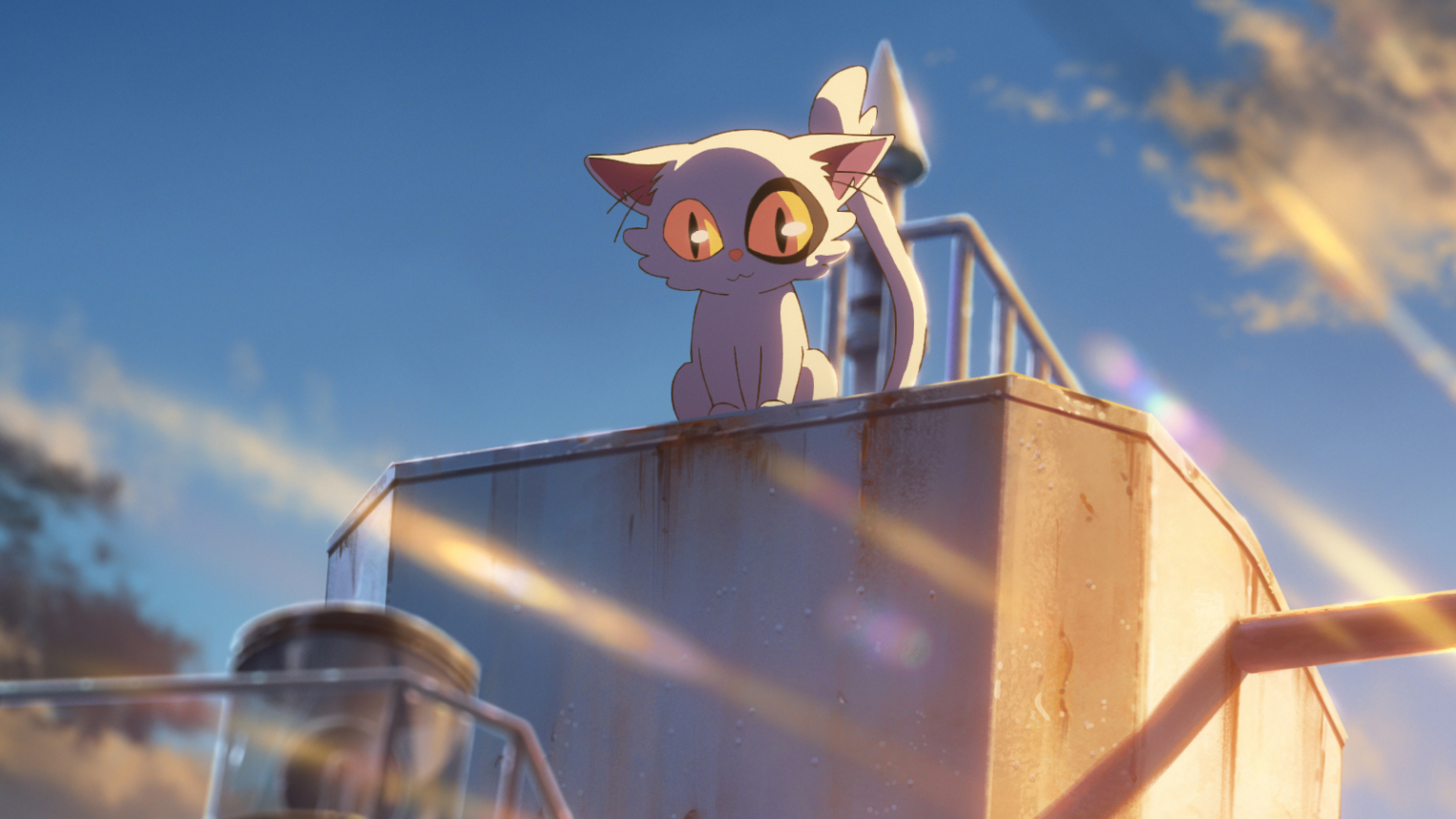
How entire nations are bounded by trauma
In order to understand the deeper meaning of Suzume, it’s important to understand how the Great Earthquake of 2011 reshaped Makoto Shinkai’s life and defined his journey as an artist (Hayao Miyazaki similarly explores environmental themes in movies like Spirited Away). The natural disaster, also known as the Tohoku Earthquake and Tsunami, was a catastrophic event that struck Japan on March 11, 2011. It was one of the most powerful earthquakes ever recorded, and it triggered a devastating tsunami that caused widespread destruction and loss of life.
During Suzume‘s premiere at the 2023 Berlin International Film Festival, Shinkai discussed in detail how the earthquake served as inspiration for the movie and reshaped his life, his journey as an artist. The event had a profound impact on him, as it did on many Japanese people. The disaster served as a reminder of the fragility of life and the power of nature, themes that are often present in Shinkai’s works.
For instance, Shinkai’s 2016 film Your Name (aka Kimi no Na wa) contains elements that resonate with the 2011 earthquake and tsunami. In the movie, a comet impact causes a devastating disaster, which the protagonists try to avert by changing the past. The idea of a community coming together to overcome a catastrophic event parallels the real-life response to the Tohoku Earthquake. Moreover, the themes of loss, separation, and the desire for connection found in Shinkai’s works, such as 5 Centimeters per Second and Weathering with You, could be seen as reflecting the emotional impact of the 2011 disaster on the Japanese psyche.
Essentially, when you view Shinkai’s filmography as a whole, you see a common theme of shared trauma between people and other people, between people and their land. The environments of his films reverberate with pain and loss, but also community and connection. All in all, Shinkai’s films form an emotional network that binds the present, past, and future as people collectively attempt to move past their mental suffering and find catharsis.
You can see how that struggle is recreated with Suzume, who is still dealing with the trauma of losing her mother years after. Suzume may be a well-adjusted girl who’s on a promising path, but the grief from which she suffers is palpable and undeniable. And whether she knows it or not, she won’t be ready to become her own woman, to forge a deeper connection with the world, to find true love until she addresses her past. Her memory of the day her mother died is hazy and hangs over her like a dark cloud. And until she travels into the Ever-After to confront her younger self, she can’t be ready to pave her own life’s path.
As we discussed in our explanation of Your Name, this underlying struggle is what makes Shinkai’s films so powerful. Understanding the ending of Suzume means understanding the relationship between Suzume and Souta, between Suzume and Kyushu, between Suzume and every person she meets, between Suzume and her homeland of Japan.
Connecting with your homeland
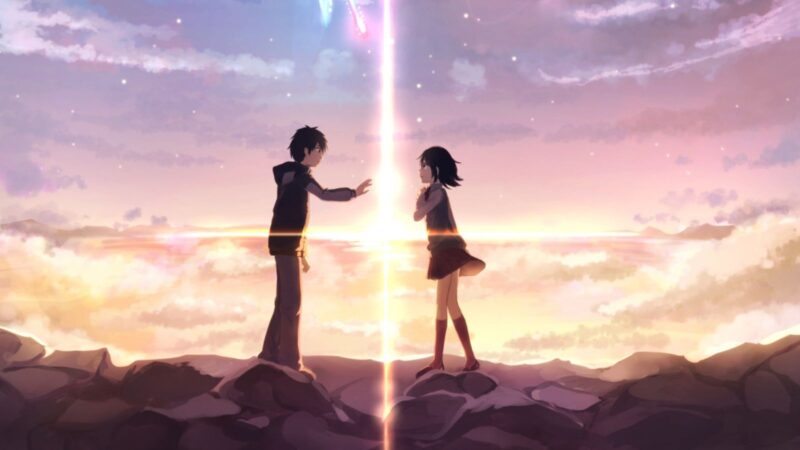
Let’s talk about Makoto Shinkai’s most famous film, Your Name, to show how the themes and ideas work in Suzume. The plot of the 2016 film tells the story of Mitsuha, a high school girl living in the rural town of Itomori, and Taki, a high school boy living in bustling Tokyo. The two characters mysteriously start switching bodies and, as they try to navigate each other’s lives, they form a deep emotional bond.
The depth of Mitsuha and Taki’s relationship is built upon the unique way they experience each other’s lives. Through the body-switching, they develop a profound understanding of one another, and they learn to appreciate the differences and similarities in their lifestyles, values, and environments. This connection transcends time and space, as they ultimately work together to save Mitsuha’s town from a catastrophic disaster.
The relationship between Mitsuha and Taki can be seen as a metaphor for the Japanese people’s connection with their land. Japan is a country of contrasts, where modern cities like Tokyo coexist with rural towns like Itomori. The film showcases these contrasts through the characters’ experiences, highlighting the beauty and challenges inherent in both urban and rural lifestyles. Mitsuha’s connection to her hometown and its traditions, such as the ritual of making kuchikamizake (a type of rice wine), reflects the deep cultural roots that many Japanese people have with their land. The film emphasizes the importance of preserving and valuing these traditions, as they provide a sense of identity and continuity.
At the same time, the film explores the idea of change and adaptation. Taki’s life in Tokyo represents the dynamic and fast-paced nature of urban life, which is attractive to Mitsuha, who yearns for something more than her quiet hometown. The film suggests that a balance can be struck between preserving tradition and embracing modernity. The connection between Mitsuha and Taki also serves as a reminder of the interconnectedness of the Japanese people, despite the differences in their lifestyles and environments. The characters’ determination to save Itomori symbolizes the collective effort that is often necessary to overcome challenges, much like how Japan united in the aftermath of the 2011 Great Earthquake.
You can see similar parallels in Shinkai’s latest film. In Suzume, Suzume’s quest to prevent disasters from striking Japan coincides with her personal journey to overcome the trauma of losing her mother, with the struggle to become her own person in the wake of personal destruction. As we saw in the Ever-After, young Suzume was absolutely debilitated by the loss of her mother. And only a wisened Suzume who had gone on a cathartic journey could point her in the right direction. Which means the entire journey represents that journey for Suzume.
Why is the movie called Suzume?
Suzume’s connection to Ama-no-Iwato
Obviously the name of the movie is the name of the movie’s main character: Iwato Suzume. But it’s worth digging into her name, as Japanese names are often rich with meaning. During a Twitter Spaces event on Dec. 30, 2022, director Makoto Shinkai discussed the name origins for several characters of the film. And his responses about about Suzume’s name create some insight. Thankfully, Reddit user aa3naan4 detailed Shinkai’s answers in this post.
First, let’s dig into the “Iwato” part of the name. As aa3naan4 writes on Reddit:
The full name, Iwato Suzume, is inspired by the Shinto goddess Ame-no-uzume.
Iwato (岩戸) comes from Ama-no-Iwato (天の岩戸; “Rock cave of the Heaven”) of the Shinto mythology. Briefly, the sun goddess Amaterasu was outraged by her brother Susanoo’s brutal pranks and locked herself in a cave, plunging the world into darkness. To lure Amaterasu out, all the other gods and goddesses worked out a plan. Ame-no-uzume performed an erotic dance in front of the cave (see wiki for details) and caused all the gods to roar with laughter. Being curious about what happened outside, Amaterasu peeked out from the cave and asked. Ame-no-uzume lied that they laughed because a goddess mightier than Amaterasu has born. Other gods immediately showed Amaterasu a mirror (Yata no Kagami). Amaterasu mistaken the reflection of herself as the newborn goddess and opened the cave door wider to see clearer. She was grabbed and pulled out of cave, and thus the sun returns to the world.
So, Suzume’s name is deeply linked with this story about the “rock cave of the Heaven.” There’s an obvious connection we can make here between that cave and the magic doors of Suzume. Ame-no-uzume, whose name bears a clear resemblance to Suzume’s, opened doors to let the sunlight out, while Suzume closes doors to keep the darkness within.
This is an interesting parallel. As we discussed in both the ending and theme sections, opening those doors forces Suzume to deal with past trauma. In a way, the Ever-After that exists behind this door is menacing and uninviting, as its the place where living beings go after their death. Yet, Suzume’s journey is all about confronting death, about grappling with the pain and suffering she experienced at the hands of natural disaster. In this way, Suzume becomes the symbolic embodiment of communal suffering: thousands of people in Japan lost loved ones to hurricanes and tsunamis just like Suzume did. And the only way Suzume can confront this reality is by passing through those doors and visiting her past self.
In this way, you can see the connection to Ama-no-Iwato, a story all about hiding yourself when things get tough. Ame-no-uzume has to trick Amaterasu in order to release the sunlight, to bring light back into the world. Suzume must keep the worm that causes earthquakes contained behind that door, yet she must also release the demons that have such a hold over her. Much like Amaterasu confronting herself in the mirror, Suzume must greet her past self and provide a path to enlightenment.
Suzume’s connection with the sparrow
It’s also worth acknowledging a much more popular understanding of the name Suzume. If you look up the name on Google, you’ll find that it usually means “sparrow.” The song “Tears of Suzume,” found on the movie’s soundtrack, acknowledges this popular interpretation of the name. This song helps us understand the deeper meaning of Suzume’s name, so here are the lyrics in full:
In a world full of colors of the future, full of colors of the past
I’m floating, you found me
Who decided that today will continue tomorrow?
The days pass by as I can’t do what I used to be like before.
It’s strange, the memories and photos
Even though it’s a long time ago
Why is it the newest to shine?
The more I wish to become stronger
I wonder why those eyes make me weak
I’m not crying. There’s no way I could cry.
What you are looking at are the tears of a sparrow
Even God doesn’t know about the sparrow’s tears
I wish I could go to that person soon.
It doesn’t seem like there’s anywhere I can go with my two legs.
You are my future, which is full of colors from the past.
“Let’s look for it together,” he said.
I embrace all the things I don’t want to forget
Where is the gap to receive the next future?
It’s you who makes me want to become stronger
Because my heart can’t bear the sight of your crying face
It doesn’t matter to me
The sparrow’s tears are bigger than the ocean
If a drop falls into the sea, the color will change.
The more I wish to become stronger, the more
I wonder why those eyes make me weak
I’m not crying. There’s no way I could cry.
What you are looking at are the tears of a sparrow
Even God doesn’t know about the sparrow’s tears
There’s no way I wouldn’t notice, that’s impossible
That’s all I can see
Big Crystal Sparrow’s Tears
The lyrics are very scattershot and vague, never really signaling a single, clearcut story. But the general vocabulary and mood of the song is very rich with loneliness, with loss, with sadness. The narrator appears to feel stuck in time, between the painful past and the menacing future. But this person doesn’t cry—they keep the sadness buried within. Which explains the lines “What you are looking at are the tears of a sparrow/Even God doesn’t know about the sparrow’s tears.” This person won’t even allow God to see their sadness.
The entire mood and feel of the song accurately captures Suzume’s traumatized state. She has failed to deal with the grief of losing her mother properly, and her entire journey in the movie is about confronting her past self as a child and providing a compassionate path for recovery. So, essentially, the song feels exactly in line with what we discussed about the story of Ama-no-Iwato.
Questions & answers about Suzume
Who are Daijin and Sadaijin?
Daijin, a white cat, and Sadaijin, a black cat, are guardian deities that act as “keystones” that must be present together to deactivate the worm. Daijin is the western keystone near Kyushu, while Sadaijin is the eastern keystone near Tokyo.
As Reddit user championchildtosser points out, “Sadaijin” translates to “Minister of the Left,” while Daijin’s full name “Udaijin” translates to “Minister of the Right.” This user also writes: “On an unrelated note, Daijin is usually written as 大臣, aka Minister, but can also be written as 大神, which means ‘mighty god.'” Perhaps there are political implications here, but this allusion could be nothing more than noting that noting these two keystones exist on opposite sides and must be brought together.
What is a closer?
Souta is a closer, which is someone who has inherited through generations the duty to close doors where the worm can enter and wreak havoc upon the world. These closers carry mystical keys that seal the doors where the worms enter.
What is the worm?
The worm creates the kinds of natural disasters that took Suzume’s mother away from her. In this sense, the worm becomes a monstrous representation of dealing with trauma and confronting your grief. As we talked about in the title section, there are ties between this journey and the Japanese mythology about Ama-no-Iwato, aka the “rock cave of the Heaven.”
Now it’s your turn
Have more unanswered questions about Suzume? Are there themes or motifs we missed? Is there more to explain about the ending? Please post your questions and thoughts in the comments section! We’ll do our best to address every one of them. If we like what you have to say, you could become part of our movie guide!

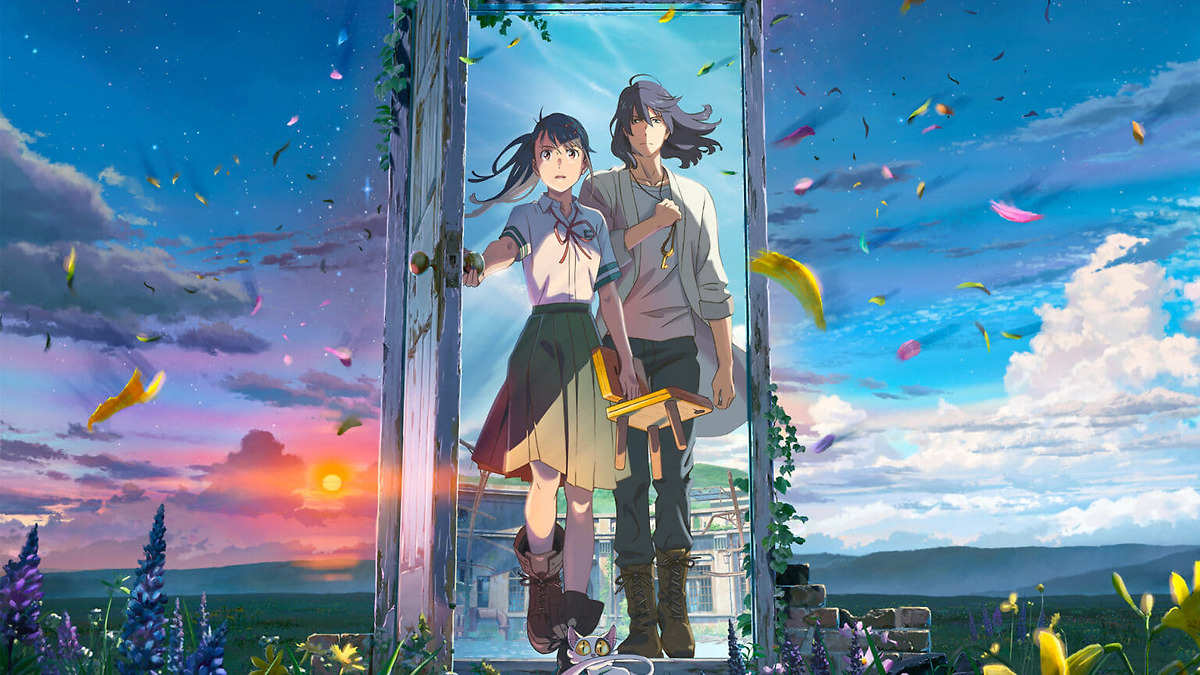
Amazing article Travis! So much food for thought here. Thank you and God bless
Thank you for the kind words!
Thank you for the excellent explanation. It helps me a lot to understand the movie more.
I think the themes of Satoshi Kon and Hayao Miyazaki’s works appear a lot in this movie. Actually, I would dare to say that “Suzume” was made as hommages to their works.
“Suzume”‘s plot – a man with a key necklace, a girl chasing the man and healing his wounds in her house, the girl chasing the man off to Hokkaido with various transportation, and earthquakes – is exactly the same as Satoshi Kon’s “Millennium Actress”. The name “Rumi”, a red sports car and room mirror scene, the line “who are you”, these must be hommages to “Perfect Blue”. The amusement park scene reminded me of a scene in “Paprika”. And a girl saving boy in the other world is what we saw in Howl’s Moving Castle and Spirited Away.
It’s a movie of hommages, similar to Disney’s 100th anniversary movie “Wish”. But surprisingly, no one mention it.
There must be a lot more than I mentioned. It will be exciting to find.
That’s a great point! We do know Makoto Shinkai is a big Miyazaki fan so it wouldn’t surprise me.
This was a joy to read. My wife and I just finished the movie and were discussing the symbolism. We both enjoyed it and picked up on the themes regarding macro/microcosmic representations of trauma due to uncontrollable natural disasters. Traumatic events are harder to process when no one is at fault due to the lack of control present in the event. We also noticed that as the main character becomes more integrated with herself and her (animus, maybe?), she simultaneously transitions clothing (From skirt to shorts and the more masculine boots, for instance). We are still unclear about some of the chair-related themes and creative representation, but I would recommend it overall. I think the West could use some of these ideas to try and reconnect to a healthy relationship with nationalism. The US has responded to the evils of its past with guilt, shame, and resentment. It needs to face those skeletons and integrate them in a way that fosters progress. The pattern of works of art like this may help to guide the way.
Beautifully said! I think you’re right that it’s about time that Western artists start exploring those kinds of themes like artists have in the East. A reckoning is coming for sure.
I probably should write about the chair a bit more and the symbolism involved. To be honest I was so consumed with the overarching themes regarding trauma that those point fell by the wayside. I will update the piece when I rewatch the movie.
Thanks for reading!